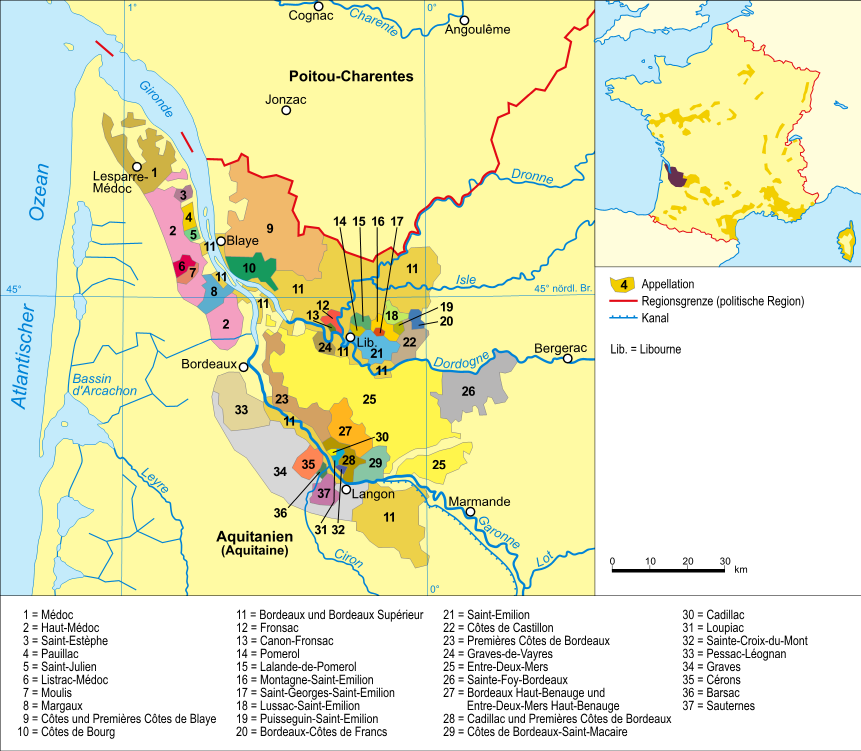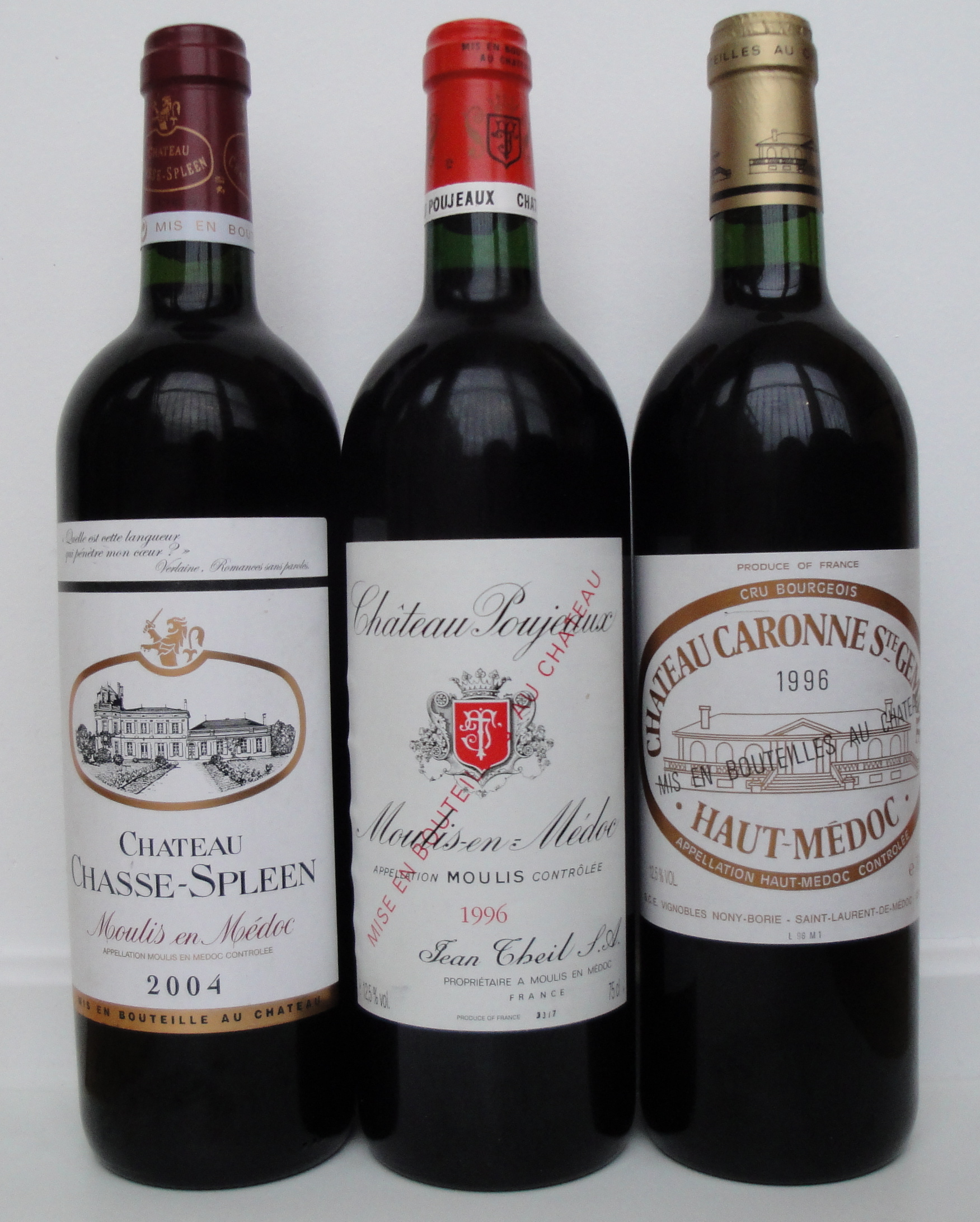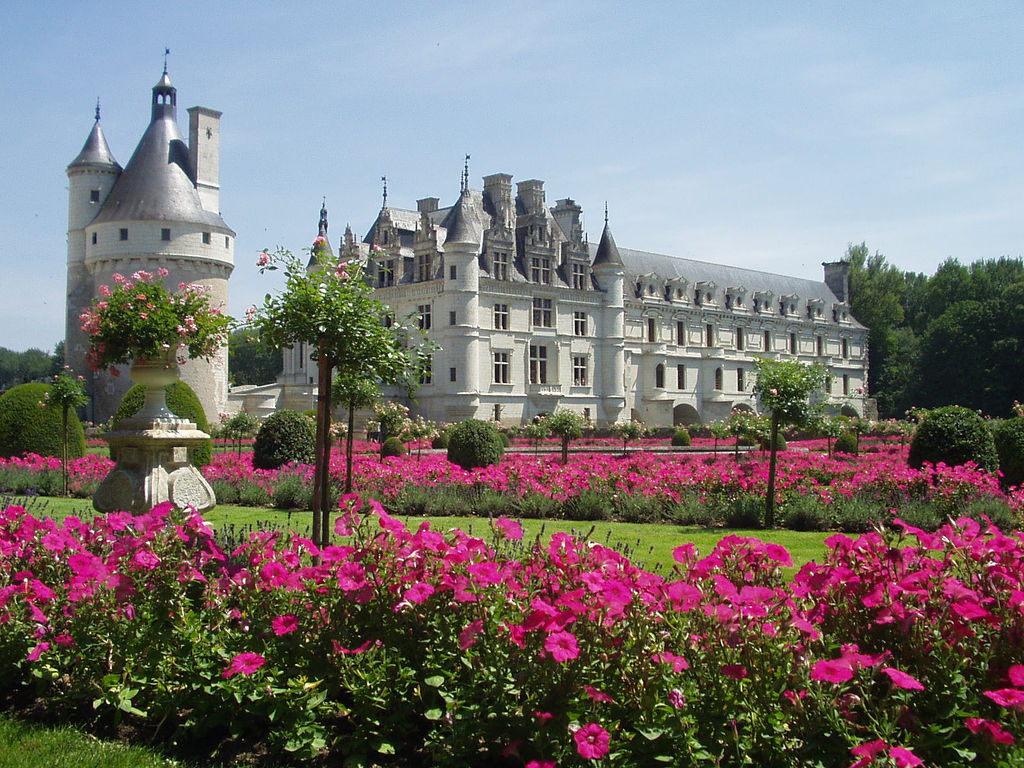|
Château Brillette
Château Brillette is a winery in the Moulis-en-Médoc Appellation d'Origine Contrôlée, appellation of the Bordeaux wine, Bordeaux region of France, just north-west of Margaux. Château Brillette was selected as ''Crus Bourgeois Supérieur'' in the ''Cru Bourgeois'' classification of 1932, and through later revisions until the annulment the classification in 2007. History The estate contains 100 continuous hectares, with 40 hectares of vines classified appellation d'origine controlée. Among the oldest vineyards in the Médoc region, Chateau Brillette entered into the possession of the Flageul family in 1976 after belonging to the Comte du Perier de Larsan and his family for nearly a century. In February 2023, it was announced Château Brillette had been acquired by the neighbouring estate, Château Chasse-Spleen. References External links Château Château Brillette official site {{DEFAULTSORT:Brilette, Chateau Bordeaux wine producers ... [...More Info...] [...Related Items...] OR: [Wikipedia] [Google] [Baidu] |
Château Brillette 2005
A château (, ; plural: châteaux) is a manor house, or palace, or residence of the lord of the manor, or a fine country house of nobility or gentry, with or without fortifications, originally, and still most frequently, in French-speaking regions. Nowadays, a ''château'' may be any stately residence built in a French style; the term is additionally often used for a winegrower's estate, especially in the Bordeaux wine regions, Bordeaux region of France. Definition The word château is a French word that has entered the English language, where its meaning is more specific than it is in French. The French word ''château'' denotes buildings as diverse as a medieval fortress, a Renaissance palace and a fine 19th-century country house. Care should therefore be taken when translating the French word ''château'' into English, noting the nature of the building in question. Most French châteaux are "palaces" or fine "English country house, country houses" rather than "castles", an ... [...More Info...] [...Related Items...] OR: [Wikipedia] [Google] [Baidu] |
Winery
A winery is a building or property that produces wine, or a business involved in the cultivation and production of wine, such as a wine company. Some wine companies own many wineries. Besides wine making equipment, larger wineries may also feature warehouses, bottling lines, laboratories, and large expanses of tanks known as tank farms. Wineries may have existed as long as 8,000 years ago. Ancient history The earliest known evidence of winemaking at a relatively large scale, if not evidence of actual wineries, has been found in the Middle East. In 2011 a team of archaeologists discovered a 6000 year old wine press in a cave in the Areni region of Armenia, and identified the site as a small winery. Previously, in the northern Zagros Mountains in Iran, jars over 7000 years old were discovered to contain tartaric acid crystals (a chemical marker of wine), providing evidence of winemaking in that region. Archaeological excavations in the southern Georgian region of Kvemo Kartli ... [...More Info...] [...Related Items...] OR: [Wikipedia] [Google] [Baidu] |
Moulis-en-Médoc
Moulis-en-Médoc (, literally ''Moulis in Médoc''; ) is a commune in the Gironde department in Nouvelle-Aquitaine in southwestern France. Geography The village is situated in the Médoc on a hill, overhanging the Tiquetorte stream, which flows into the Gironde estuary. Districts: ''Le Bourg, Bouqueyran, Grand-Poujeaux''... History Vineyards have been cultivated in Moulis at least as far back as Roman times, as three Gallo-Roman establishments have already been discovered. The grape variety biturica is from this era, an ancestor of the cabernet variety. The term "biture" meaning "booze-up", relating to "ivresse" or "intoxication" comes from this variety of grape. During the Middle Ages, the Médoc was the granary of Bordeaux. This is demonstrated by the presence of numerous mills to grind the grain. It is from the term "Moulin" that Moulis takes its name: "Moulinis". The vineyards of the era belonged to some feudal proprietors and a religious community which the Ro ... [...More Info...] [...Related Items...] OR: [Wikipedia] [Google] [Baidu] |
Appellation D'Origine Contrôlée
In France, the ''appellation d'origine contrôlée'' (, ; abbr. AOC ) is a label that identifies an agricultural product whose stages of production and processing are carried out in a defined geographical area – the ''terroir'' – and using recognized and traditional know-how. The specificity of an AOC product is determined by the combination of a physical and biological environment with established production techniques transmitted within a human community. Together, these give the product its distinctive qualities. The defining technical and geographic factors are set forth in standards for each product, including wines, cheeses and meats. Other countries and the European Union have similar labeling systems. The European Union's protected designation of origin (PDO and PGI) system has harmonized the protection of all geographical indications and their registration. When labelling wine however, producers may still use recognized traditional terms like AOC, and are not requ ... [...More Info...] [...Related Items...] OR: [Wikipedia] [Google] [Baidu] |
Bordeaux Wine
Bordeaux wine (; ) is produced in the Bordeaux region of southwest France, around the city of Bordeaux, on the Garonne River. To the north of the city, the Dordogne River joins the Garonne forming the broad estuary called the Gironde; the Gironde department, with a total vineyard area of 110,800 hectares, is the second largest wine-growing area in France behind the Languedoc-Rousillon. Average vintages produce over 700 million bottles of wine, ranging from large quantities of daily table wine to some of the world's most expensive and prestigious wines. The vast majority of wine produced in Bordeaux is red (sometimes called "claret" in Britain), with sweet white wines (most notably Sauternes), dry whites, and (in much smaller quantities) rosé and sparkling wines ( Crémant de Bordeaux) collectively making up the remainder. Bordeaux wine is made by more than 5,660 producers or ''châteaux''. There are 65 appellations of Bordeaux wine. History Viticulture was introduce ... [...More Info...] [...Related Items...] OR: [Wikipedia] [Google] [Baidu] |
France
France, officially the French Republic, is a country located primarily in Western Europe. Overseas France, Its overseas regions and territories include French Guiana in South America, Saint Pierre and Miquelon in the Atlantic Ocean#North Atlantic, North Atlantic, the French West Indies, and List of islands of France, many islands in Oceania and the Indian Ocean, giving it Exclusive economic zone of France, one of the largest discontiguous exclusive economic zones in the world. Metropolitan France shares borders with Belgium and Luxembourg to the north; Germany to the northeast; Switzerland to the east; Italy and Monaco to the southeast; Andorra and Spain to the south; and a maritime border with the United Kingdom to the northwest. Its metropolitan area extends from the Rhine to the Atlantic Ocean and from the Mediterranean Sea to the English Channel and the North Sea. Its Regions of France, eighteen integral regions—five of which are overseas—span a combined area of and hav ... [...More Info...] [...Related Items...] OR: [Wikipedia] [Google] [Baidu] |
Margaux
Margaux (; ) is a former commune in the Gironde department in Nouvelle-Aquitaine in southwestern France. On 1 January 2017, it was merged into the new commune Margaux-Cantenac. 17 November 2016 Geography The village lies in the Haut Médoc wine making region on the left bank of the estuary, northwest of the city of . Population |
Cru Bourgeois
The Cru Bourgeois classification lists some of the Château#Bordeaux, châteaux from the Médoc that were not included in the Bordeaux Wine Official Classification of 1855, 1855 Classification of ''Crus Classés'', or Classed Growths. Notionally, ''Cru Bourgeois'' is a level below ''Cru Classé'', but still of high quality (formerly there were additional grades of ''Cru Artisan'' and ''Cru Paysan''). Many wine writers consider that there is some overlap in quality between the Classed Growths and the Cru Bourgeois, although also saying that by and large the Classed Growths still represent the best wines. The first Cru Bourgeois list was drawn up by the Bordeaux Chamber of Commerce and Chamber of Agriculture in 1932, selecting 444 estates for the classification. The words ''Cru Bourgeois'' were widely used on labels by the châteaux so listed, although the classification was never officially ratified. A substantial revision of the classification, dividing it into three tiers, was i ... [...More Info...] [...Related Items...] OR: [Wikipedia] [Google] [Baidu] |
Château Chasse-Spleen
Château Chasse-Spleen is a winery in the Moulis-en-Médoc appellation of the Bordeaux region of France, just north-west of Margaux. Château Chasse-Spleen was selected as one of six ''Crus Exceptionnels'' in the ''Cru Bourgeois'' classification of 1932, and through later revisions until the annulment of the classification in 2007. The estate is today widely considered to be of ''cru classé'' standard. The name means "to chase away the blues" or "dispels melancholy". A second wine is produced under the label L'Héritage de Chasse-Spleen and another titled l'Oratoire de Chasse-Spleen. History Long viewed as the leading '' cru'' of Moulis, the estate's viticultural history is documented back to 1560, and possibly before. Initially an estate named Grand-Poujeaux, it was owned by the ''seigneurs'' Grenier, which may have evolved into Gressier. The estate was divided in 1822 due to inheritance complications, with half the property becoming Château Gressier-Grand-Poujeaux, and t ... [...More Info...] [...Related Items...] OR: [Wikipedia] [Google] [Baidu] |
Château Brillette, à Travers Les Vignes
A château (, ; plural: châteaux) is a manor house, or palace, or residence of the lord of the manor, or a fine country house of nobility or gentry, with or without fortifications, originally, and still most frequently, in French-speaking regions. Nowadays, a ''château'' may be any stately residence built in a French style; the term is additionally often used for a winegrower's estate, especially in the Bordeaux region of France. Definition The word château is a French word that has entered the English language, where its meaning is more specific than it is in French. The French word ''château'' denotes buildings as diverse as a medieval fortress, a Renaissance palace and a fine 19th-century country house. Care should therefore be taken when translating the French word ''château'' into English, noting the nature of the building in question. Most French châteaux are "palaces" or fine "country houses" rather than "castles", and for these, the word "château" is appropria ... [...More Info...] [...Related Items...] OR: [Wikipedia] [Google] [Baidu] |





